Your Cart is Empty
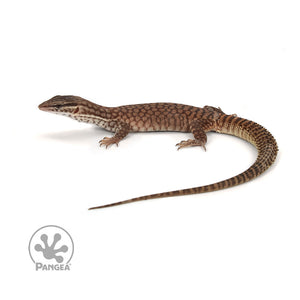
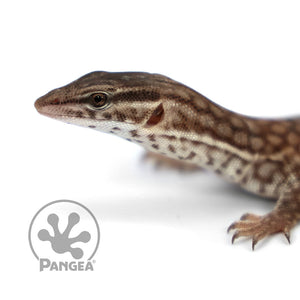
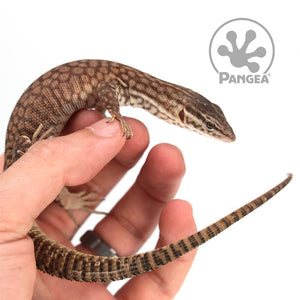
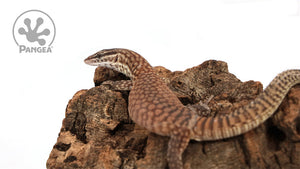
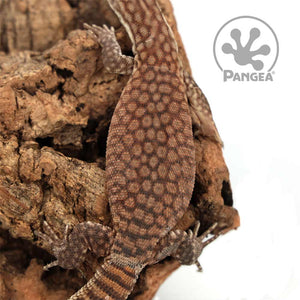
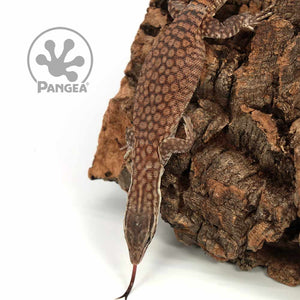
Sold out
Junvenile Ackie Monitor | Varanus acanthurus
$499.99
Looking for a smart inquisitive reptile that's fun to observe and is easy to handle? Pangea has you covered with our beautiful Ackie Monitors. These little monitors make amazing pets. They are active diurnal lizards that are fascinating to watch throughout the day hunting for insects and small prey or basking under their heat bulb. They 'tame' very easily even, as juveniles we find them to be very calm when handled. Even as adults their small size and small claws make them one of the easiest to handle monitor species.
- Diurnal- Active during the day
- Carnivorous - Insects, mice & small prey items
- Fossorial - Burrowing species
- Basking - Requires heat & UVB
- 24""- 28"" average adult size
- 15-20 year lifespan in captivity
- Socialized- Raised with other Ackies handled often by humans
- Unsexed
Enclosure:
As an adult, this active burrowing species requires a minimum 36" x18" x18" enclosure. Although this species will not become very large they are very active and will utilize all of the space you provide for them so more is better. If you have space and the budget an enclosure with 8-12 square feet of floor space and 18" -24" of height will really allow your V. acanthurus to thrive.
Substrate:
Ackies are fossorial so we recommend having a substrate that will hold some moisture and pack well enough to keep burrows intact. We recommend a mix of top-soil (50%)sand (25%) and organic substrates like peat moss or coconut fiber(25%).
Light & Heat:
They also require UVB and heat. For UVB we recommend the Zoo Med Reptisun 10.0 UVB T5 HO or the Zoo Med Reptisun 10.0 UVB Mini CFL depending on what your enclosure top will allow. We use our 75- Watt Pangea Halogen Heat Lamp for daytime and our 50-Watt Pangea Deep Heat Projector for 24-hour heat. We use Herpstat 1 SpyderWeb thermostat to apply 120°F-170°F to the basking surface accurately. It is important to have a horizontal thermal gradient across your enclosure with a cool side air temperature of 75°F-85°F and a warm side air temperature of 85°F-100°F. It is equally as important with this species being fossorial to offer a vertical temperature gradient on your hot side using stacked layers of material such as slate or sandstone. These stacks should be made out of a durable non-toxic material that can absorb heat without burning melting or releasing chemicals. The stacks should have spaces in-between just big enough for the animal to get into. These spaces provide hiding places to make the animal feel secure as well as providing micro-climates in a vertical gradient. These micro-climates assist the monitor in thermoregulation.
Humidity:
Although Ackies and other monitors are known for living in arid habitats they do have more specific humidity requirements than some arid species. Ambient humidity should be between 20-50%you can achieve this by having a large water bowl ideally large enough for them to soak in. Additionally V. acanthurus have substrate humidity requirements to keep their burrows intact around 80% is ideal for them to be comfortable. We use our Pangea Spray Bottle to keep the ambient and substrate humidity levels. Monitoring the humidity and temperature will be especially important with screen-top cages. We recommend using our Pangea Thermometer/Hygrometer Combo for monitoring your atmosphere.
Diet:
We feed our Ackies a combination of prey items like crickets and dubia roaches that you can find in the live feeders section of our website. We also offer our Ackies frozen-thawed pinky mice when they reach an appropriate size.
We love Ackies and think you could too! This is one of if not the best beginner monitor species and is one of the most fascinating reptiles you can observe and handle. Get one of these beauties today from Pangea Reptile.
This is an intermediate care level species. This is NOT an exhaustive care guide. Do your research. Use multiple sources. Have your enclosure ready before you schedule your shipment.







